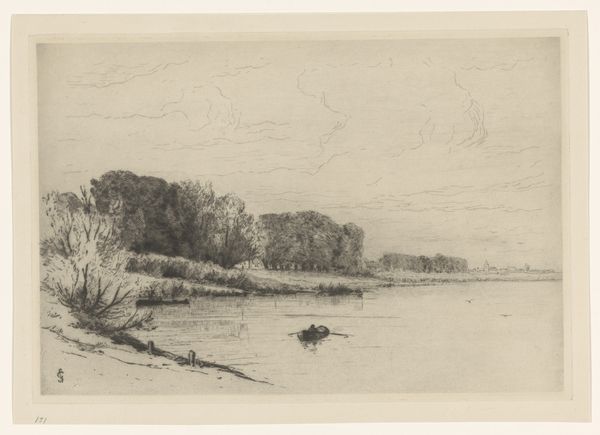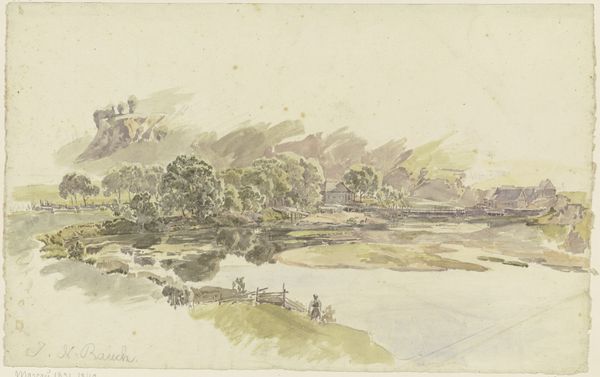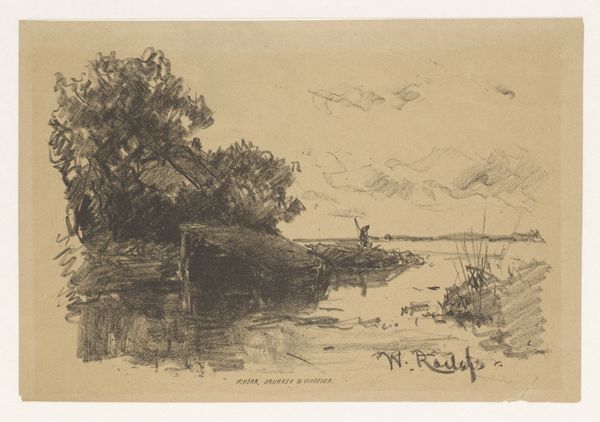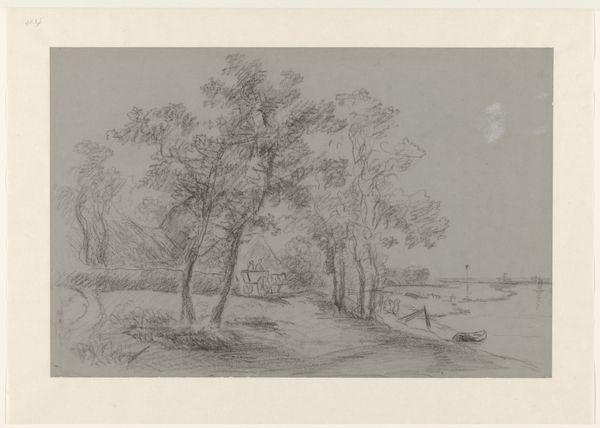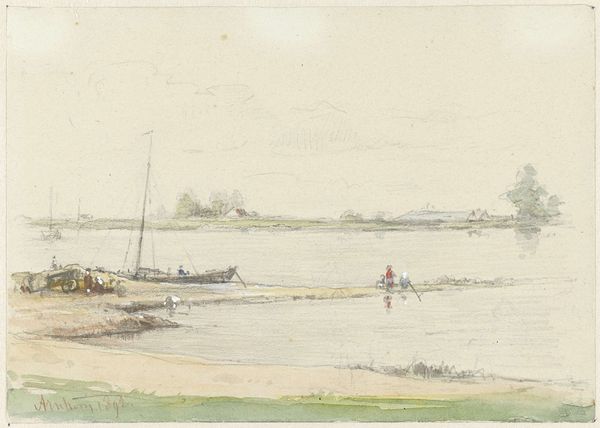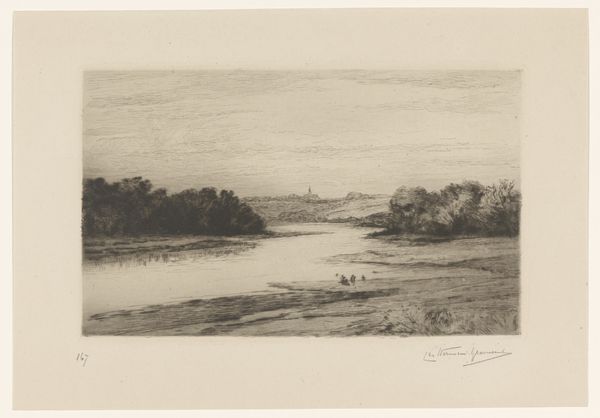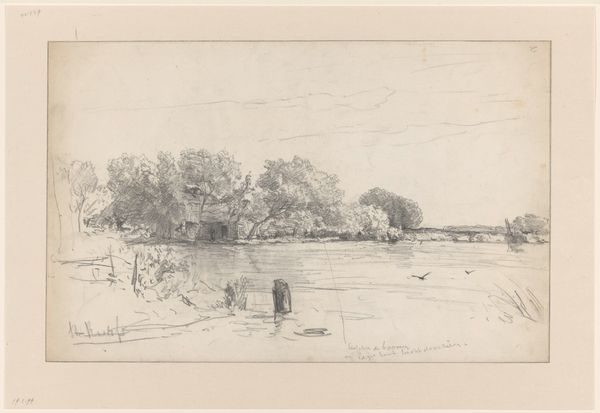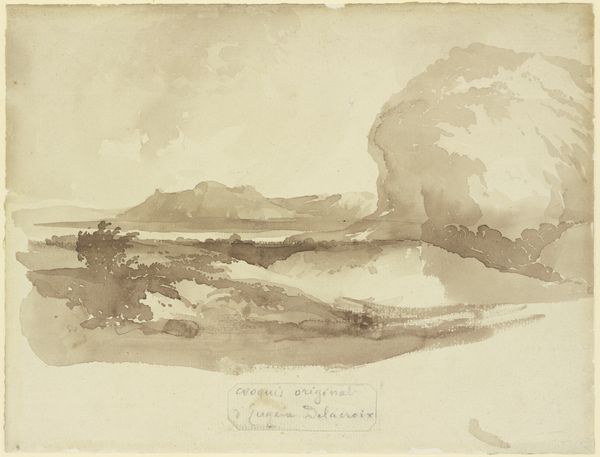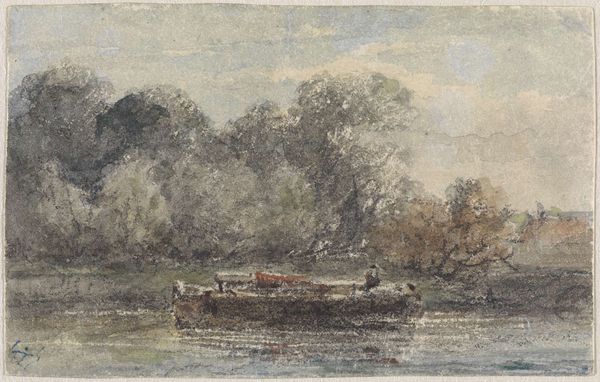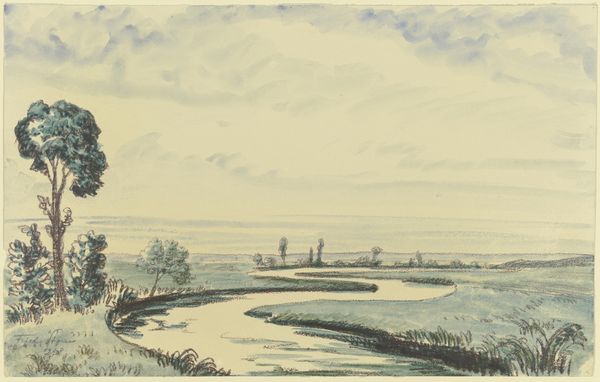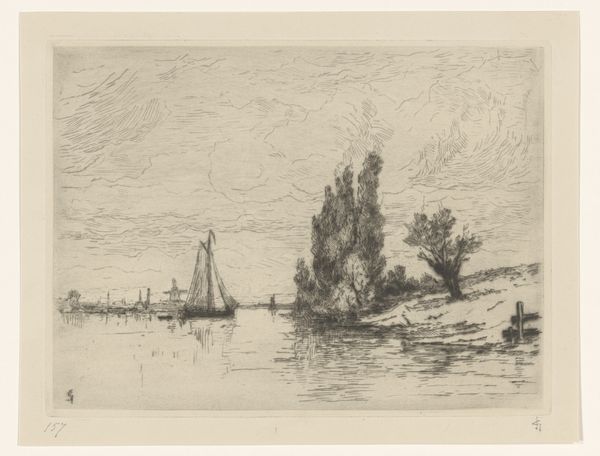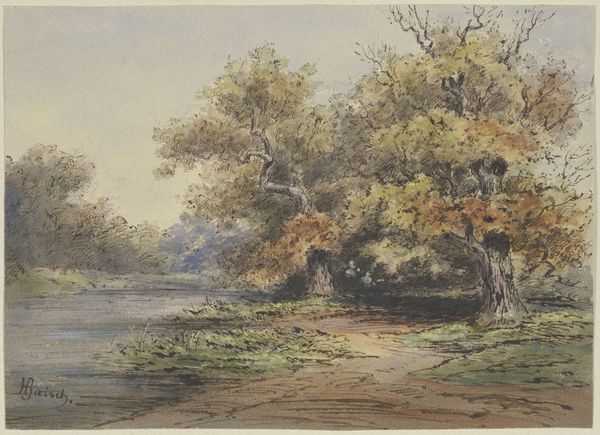
Copyright: Public Domain
Editor: So, this is Adolf Hoeffler's "Strand von Schulau bei Blankenese," created in 1895 using watercolor and pencil on paper. It's a pretty quiet scene, almost monochromatic. What's your take on this work? Curator: Well, looking at it from a historical perspective, it's interesting to see how Hoeffler situates himself within the broader Impressionist movement, especially its impact outside France. Think about the late 19th century; the art world was shifting rapidly. How do you see this piece engaging with the contemporary discussions around landscape painting and the representation of everyday life? Editor: I see it as quite understated compared to some of the more vibrant Impressionist pieces, there’s more emphasis on the tonal values rather than colour. It feels more like a fleeting moment, capturing a specific atmosphere, than a grand statement. Curator: Exactly! It almost feels like a document of a particular place and time. The Städel Museum where it is kept acquires pieces that can demonstrate the aesthetic changes happening within a time frame. Could this work have something to do with new ways artists in Germany started embracing these international movements like Impressionism while still holding on to certain elements of their local artistic traditions? Editor: Perhaps there's a tension between capturing the objective reality of the scene and infusing it with personal sentiment. The softness and light might soften political readings. Curator: That's a key tension of this era. The rise of public art institutions shaped what art was deemed valuable and worthy of display. It raises questions about access, representation, and who gets to define "art" and it's "purpose". Editor: That’s something I'll definitely consider as I delve deeper into 19th-century art. Thanks! Curator: Indeed. Understanding that socio-political backdrop really enriches the way we experience art.
Comments
No comments
Be the first to comment and join the conversation on the ultimate creative platform.
